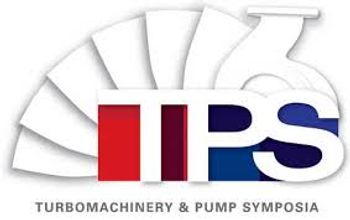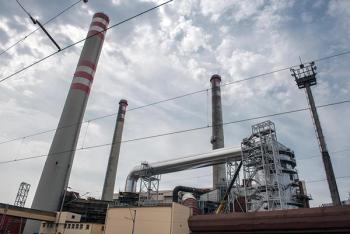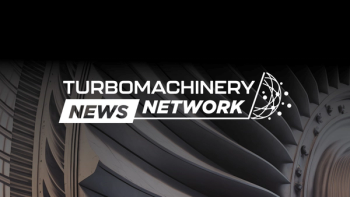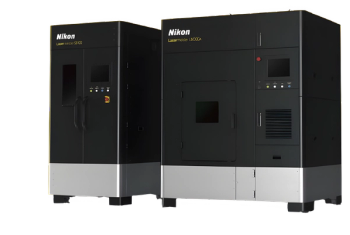
- September/October 2025
- Volume 66
- Issue 5
Preventing Leakage and Breakage in Turbomachinery: Addressing Thin-Wall Casings and Shell Body Vulnerabilities
Key Takeaways
- Leakage in turbomachinery often occurs at damaged thin shells, bolt connections, and seals, with threaded connections being less common.
- Thin shells in turbomachinery offer high load capacity but are prone to local damage and buckling due to imperfections and nonlinearities.
Thin-wall casings and shell bodies play a critical role in turbomachinery, but their susceptibility to imperfections and buckling raises leakage and failure risks.
Leakage, breakage, and operational problems have been reported in many turbomachines. This article discusses leakage, operational problems, and potential of breakage and failures in turbomachinery such as compressors, pumps, fans, blowers, and turbines, with a focus on shell bodies and thin-wall casings.
TYPICAL LEAKAGE POINTS IN TURBOMACHINERY
Historically, three frequently reported points for leakage have been (1) locally damaged or buckled thin shells such as thin-wall casings/piping, large shells, thin-wall sections, etc.; (2) bolt connections such as flange connections and bolted sections; and (3) seals in turbomachinery.
Besides those, threaded connections and other connection types could potentially be the leakage point. However, the use of these special–type connections is limited in modern turbomachinery.
SHELL BODIES AND THIN-WALL CASINGS: STRENGTHS AND LIMITATIONS
Many turbomachinery casings, bodies, components, impellers, blades, and rotating parts are theoretically thin-wall shells or folded thin plates. Examples are casings, tubular/cylindrical shell bodies, piping spools, and more. The shells are more complicated than flat plates because their bending cannot, in general, be separated from their stretching. Due to the curvature of the surface, a shell acquires a spatial stiffness that gives it, theoretically, a larger load-carrying capacity.
Therefore, thin shells have been widely used in many applications of turbomachinery; however, they are vulnerable to local damages and local buckling and could be the leakage/ damage point (or point of failure). Leakage and failures in such thin-wall, shell-like casings and parts have been frequently reported.
IMPERFECTION SENSITIVITY AND FAILURE MODES
The reason that many shells fail at a much smaller load than the classical critical load (calculated by perfect shell analytical models) consists in the combined effect of imperfections, defects, and nonlinearities. In practice, there are random imperfections/defects that affect shells and shell-like bodies. The major challenge is that even in rather careful experiments, the measured failure loads and collapse modes exhibit tremendous scatter due to random imperfections/defects.
LOCAL VS. GLOBAL BUCKLING INTERACTIONS
The nonlinearities and imperfections/defect sensitivities of shells manifest themselves in a variety of buckling shapes and in many different forms of failures (and damage modes). The buckling may show rapid transitions from one shape to another and is a very sudden and collapse-like phenomenon. This can lead to leakage, fracture, or even total collapse of the entire part or component.
PRACTICAL RISKS IN DESIGN AND OPERATION
Too often, the high imperfection sensitivity and high nonlinearity of the mechanical behavior of shells (thin parts, thin machinery casings, piping connected to machinery, etc.) are the consequence of interactions. There might be many different buckling/failure modes associated with the same or nearly the same (critical/buckling) load. Consequently, the different buckling modes interact, such as the interaction of different local buckling modes or the interaction of local buckling and global buckling. This interaction of buckling/ failure modes combined with imperfections/ defects is the culprit.
Thin shells...are vulnerable to local damages and local buckling and could be the leakage/damage point or point of failure.
Shells are very sensitive to transverse forces, especially if they are simultaneously subjected to an axial compressive load. The weakening effect of component imperfections/defects is most pronounced in the range of intermediate slenderness. In those slenderness ratios, the critical buckling/ failure stress and the effective yield stress are roughly equal. The decrease in strength is most marked for shells and plates of intermediate slenderness subjected to compressive stressing. Unfortunately, these intermediate slenderness ranges are actually used in many practical applications.
A pragmatic solution is
- Detailed/accurate verifications for the shell-like bodies/parts/equipment considering all possible buckling/ failures with all realistic details/ imperfections/defects.
- Or alternatively, use sufficient safety factors to cover all buckling/failures to prevent leakage, failure, and breakage.
BOLT CONNECTION VS. WELDING
The flexibility offered by bolt connections in fabrication, installation, operation, and maintenance is a great factor. On the other hand, any bolt connection is an expensive joint (individually) compared to welding. For bolting connections, many different risks should be mitigated, and many requirements should be met. There are always risks of leakage.
CONSERVATIVE APPROACHES TO VULNERABLE POINTS
The conditions and environment under which turbomachinery is operated are severe and subject to uncertainties. As a result, it is desirable to make allowance for the abuses that may result from unexpected conditions, operator errors, or the effects of wear and tear on key components, subsystems, members, and their connections. Great care should be taken for vulnerable points such as thin shells.
Stress conditions, manufacturing details, and the crack situation at/near high stress points in shells are important. These key areas need added attention during fabrication, manufacturing, operation, and inspection.
CONCLUSION: ENGINEERING FOR RELIABILITY
This article discusses leakage, operational problems, failure, and breakage in turbomachinery with a focus on ultimate strength of shell parts and thin-wall components. Connections, whether welding connections or bolting connections, are important for much turbomachinery and associated piping. The type and details of connections between major assemblies, subassemblies, and piping spools need great care.
Great attention is needed for shell-like parts/equipment and thin-wall bodies (such as large-diameter thin-wall casing, piping, etc.) as they can easily be affected by local yielding and local buckling and subsequently leakages and failures.
Amin Almasi is a Chartered Professional Engineer in Australia and the U.K. He is a senior consultant specializing in rotating equipment, condition monitoring, and reliability.
Articles in this issue
about 1 month ago
Myth: High-Speed vs. Low-Speed Balancingabout 2 months ago
Steam Turbine Optimization for Mechanical Drive Applications – Part 1about 2 months ago
Turbomachinery International: September/October 2025Newsletter
Power your knowledge with the latest in turbine technology, engineering advances, and energy solutions—subscribe to Turbomachinery International today.





